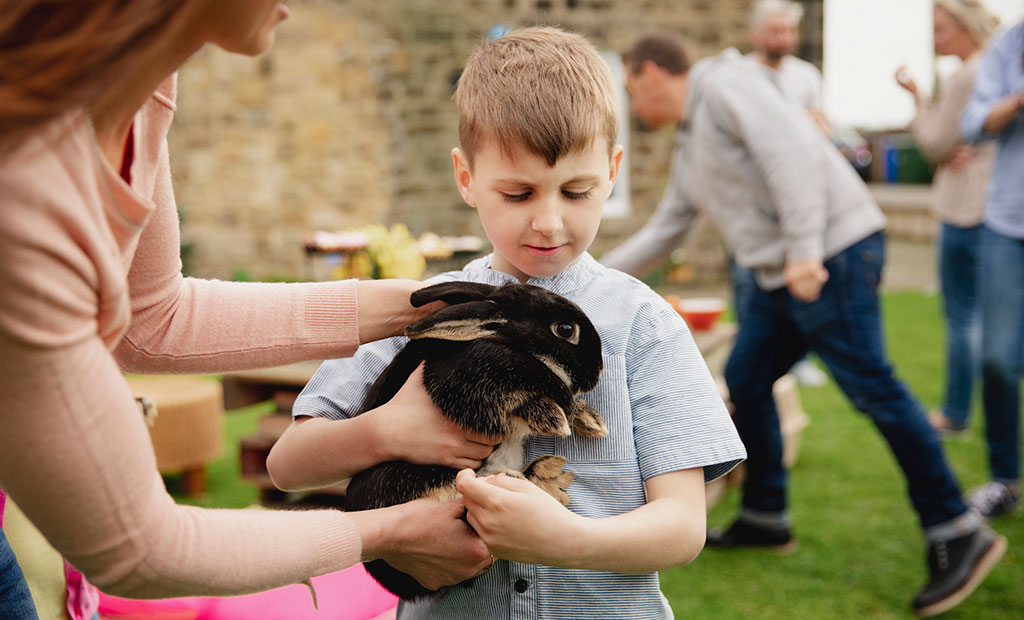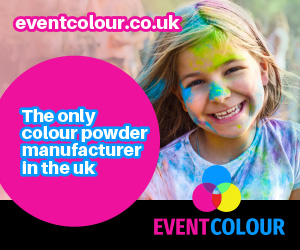Who could resist seeing which dog wins the wettest nose or waggiest tail competition at your very own pet show? Raise children’s awareness of animal welfare issues, while raising funds for your school.
- Six weeks before: Agree the parameters with the headteacher. Send out a letter to parents – this should include a form asking for details about the pet, and requesting a small donation (around £1). Stipulate that animals brought in by families at your school are done so at their owners’ risk and should be kept on leads or in cages at all times. Invite external organisations such as a local wildlife centre or petting zoo to bring animals along, paying attention to any specific requirements that their animals have. Research external companies thoroughly and check that they are licensed appropriately with your local authority. Any third party suppliers attending your event will need to provide details of their insurance before the event. Check your PTA insurance summary to see what’s covered.
- Four weeks before: Agree your pet categories and choose your judges – perhaps a local vet or pet shop owner. Identify what jobs need doing and seek out volunteers. Plan your profit-boosting stalls such as refreshments and game stalls to keep visitors occupied.
- Two weeks before: Send out a reminder letter – there’s always a late-entry bunny on the day! Adorn the school with enticing posters inviting people to come along to the pet show – even if they don’t have a pet. If you’ve invited a local wildlife centre to come along, include details in your publicity, and charge an entry fee to visit their exhibit, announcing costs in advance.
- One week before: Complete a risk assessment in accordance with Health and Safety Executive guidelines. Have registered first aiders lined up to be on-site during the event. Make sure you have any equipment needed for the day itself, such as tables, tea urns, rosettes, bin bags and antibacterial hand gel. Hand washing facilities will need to be available and clearly signposted.
- On the day: Keep different types of animals separated and have staggered entry times. Ensure owners stay with their pets at all times, keeping them under control and (where applicable) in their cages. Any ‘mess’ pets make needs to be cleared up by the owners. Award prizes to winners of the different categories – these might be vouchers for a pet shop, or other pet-related prizes.
- After the event: Leave the school exactly as you found it! Ask for feedback from competitors and get your volunteer team to fill out a ‘knowledge capsule’. This will help consolidate feedback while ideas are still fresh, enabling suggested changes to be considered when planning future pet shows. Display photos from the event on your PTA noticeboard and social media – include comments from pupils.
Download a print-friendly PDF version of our step-by-step guide to pet shows
RSPCA advice
- Both the pet owners and the PTA have a responsibility to comply with the Animal Welfare Act (2006). Although the owner always has legal responsibility for their animal, everyone must play their part in ensuring the animals are well cared for during their visit, with suitable accommodation, food and water.
- Consider your choice of animals – while it’s easy to transport rodents, these are usually only awake at night and are particularly sensitive to noise. Animals like rabbits and rodents may become stressed if they can see, smell or hear predators like dogs, so consider this when planning. Levels of light, heat and noise must be appropriate for each species.
- Consider temperament. Animals should be confident with new situations, good with other animals and children, and be familiar with basic commands (dogs).
- Specify that all animals should be in good health and have had any vaccinations/parasite treatments.
- Will any dogs attending have docked tails? It is illegal to show a dog whose tail was docked, after 27 March 2007 in Wales or 5 April 2007 in England, at an event to which members of the public are admitted on payment of a fee. The only exception is working dogs with a veterinary certificate.
- When you are thinking of your choice of classes, judge on health and welfare, not just appearance. Some animals are bred to look a certain way and it can actually cause suffering. Good classes could be ‘best child handler’, ‘best behaved pet’ and ‘best pet story’.
- The owner of an exotic pet has a legal duty of care to meet the specialist needs of the animal. For more information read our FAQs guide to running a pet show or go to the RSPCA website.
Pet show success story
‘One of the great things about the pet show is that it is organised for the children. We have five categories of entrant – dogs, cats (judged via photograph), rabbits/guinea pigs, hamsters/other rodents and ‘anything else’ – over the last few years ‘anything else’ has included a horse, a chicken, a crayfish and a caterpillar called Curly! If it’s well behaved, it’s welcome. Rabbits and guinea pigs are kept in a pen in the hall made from trestle tables and scattered hay, whilst small animals are kept in their cages. Dogs are outside on a large grass roundabout, and are taken home once they’ve been judged. Their owners are responsible for any ‘mess’ they make, and children are not allowed near the dogs. Last year we invited a local exotic pet shop to attend the show. They ran two 30-minute sessions for groups of children. Their range of unusual animals included snakes, lizards, spiders and millipedes. This was a huge success and one which we plan to repeat. We charged £2.50 per child for the session. It was visited by many children from the school – even those without pets came along. We served refreshments and provided a few additional stalls to keep children occupied while they were waiting for the judging, such as an animal quiz, pin-the-tail and animal tombola. Last year we made approximately £300 profit.’
Annie Snell, pet show organiser at Boxmoor Primary School, Hertfordshire (236 pupils)
Virtual pet show
For a quick and easy fundraiser, how about this virtual alternative?
‘Our virtual pet show is a popular event. We send out entry forms four weeks before the show, which we hold during the same week as Crufts. We give each child a letter with a list of categories they can enter their pets into, eg best dressed, most helpful, most unusual and best rescue pet. We also have a ‘borrowed’ category, where children can enter a friend’s or family member’s pet if they don’t have their own.
Each entry costs £1.50, and we allow multiple entries to boost profits. Some children only enter once, but some enter up to 10 times! At our last event we received nearly 200 entries, which is fantastic for a school of 155 pupils.
To enter, children must send in a photo of their pet with the pet’s name, child’s name, category and entry fee. Every entrant gets a small prize of some stationery. Once all entries are in, we sort them into categories and display them on pinboards for judging. We’re lucky enough to have an independent judge from the Blue Cross to award first, second and third place in each category. The winners of these receive rosettes. Once all winners have been chosen, it’s time to pick the Champion of Champions! The child with the winning pet is awarded the highly-coveted ‘Virtual Pet’ trophy. The trophy is engraved with the child’s name and the year, a cost that is covered by a local dog groomer, who also donated the trophy and pays for the rosettes. We hold the awards ceremony in the hall straight after school. The whole thing takes about an hour, and at our last show we raised £370.’
Andrea Bradley, PTA Chair, Silkstone Common School, Barnsley (155 pupils)
See also
- FAQs first aid
- Read our FAQs on running a pet show
- Boost your profits with games stalls
- ‘Our fundraising dog walk paid for a school trip’
- ‘Our school pigs bring the community together’
- See all our step-by-step guides
The above is intended as guidance only. We recommend that you contact the relevant organisations with specific reference to insurance, legal, health and safety and child protection requirements. Community Inspired Ltd cannot be held responsible for any decisions or actions taken by a PTA, based on the guidance provided.



.gif)







